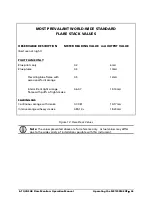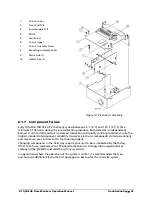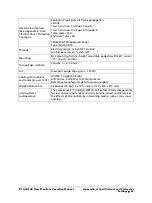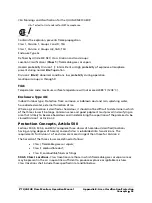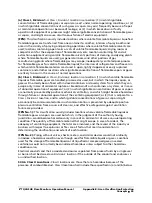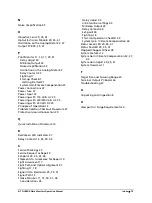
E
2
T QUASAR Flare Monitors Operation Manual
Appendix B: Area Classification/Protection
Concepts
•
59
(a) Class I, Division 1.
A Class I, Division 1 location is a location: (1) in which ignitable
concentrations of flammable gases or vapors can exist under normal operating conditions; or (2)
in which ignitable concentrations of such gases or vapors may exist frequently because of repair
or maintenance operations or because of leakage; or (3) in which breakdown or faulty
operation of equipment or processes might release ignitable concentrations of flammable gases
or vapors, and might also cause simultaneous failure of electric equipment.
(FPN):
This classification usually includes locations where volatile flammable liquids or liquefied
flammable gases are transferred from one container to another; interiors of spray booths and
areas in the vicinity of spraying and painting operations where volatile flammable solvents are
used; locations containing open tanks or vats of volatile flammable liquids; drying rooms or
compartments for the evaporation of flammable sol-vents; locations containing fat and oil
extraction equipment using volatile flammable solvents; portions of cleaning and dyeing plants
where flammable liquids are used; gas generator rooms and other portions of gas
manufacturing plants where flammable gas may escape; inadequately ventilated pump rooms
for flammable gas or for volatile flammable liquids; the interiors of refrigerators and freezers in
which volatile flammable materials are stored in open, lightly stoppered, or easily ruptured
containers; and all other locations where ignitable concentrations of flammable vapors or gases
are likely to occur in the course of normal operations.
(b) Class I, Division 2.
A Class I, Division 2 location is a location: (1) in which volatile flammable
liquids or flammable gases are handled, processed or used, but in which the liquids, vapors, or
gases will normally be confined within closed containers or closed systems from which they can
escape only in case of accidental rupture or breakdown of such containers or systems, or in case
of abnormal operation of equipment; or (2) in which ignitable concentrations of gases or vapors
are normally pre-vented by positive mechanical ventilation, and which might become hazardous
through failure or abnormal operation of the ventilating equipment; or (3) that is adjacent to a
Class I, Division 1 location, and to which ignitable concentrations of gases or vapors might
occasionally be communicated unless such communication is prevented by adequate positive-
pressure ventilation from a source of clean air, and effective safeguards against ventilation
failure are provided.
(FPN No. 1):
This classification usually includes locations where volatile flammable liquids or
flammable gases or vapors are used but which, in the judgment of the authority having
jurisdiction, would become hazardous only in case of an accident or of some unusual operating
condition. The quantity of flammable material that might escape in case of accident, the
adequacy of ventilating equipment, the total area involved, and the record of the industry or
business with respect to explosions or fires are all factors that merit consideration in
determining the classification and extent of each location.
(FPN No. 2):
Piping without valves, checks, meters, and similar devices would not ordinarily
introduce a hazardous condition even though used for flammable liquids or gases. Locations
used for the storage of flammable liquids or of liquefied or compressed gases in sealed
containers would not normally be considered hazardous unless subject to other hazardous
conditions also.
Electrical conduits and their associated enclosures separated from process fluids by a single seal
or barrier shall be classed as a Division 2 location if the outside of the conduit and enclosures is
an unclassified location.
500-6. Class II Locations.
Class II locations are those that are hazardous because of the
presence of combustible dust. Class II locations shall include those specified in (a) and (b) below.


